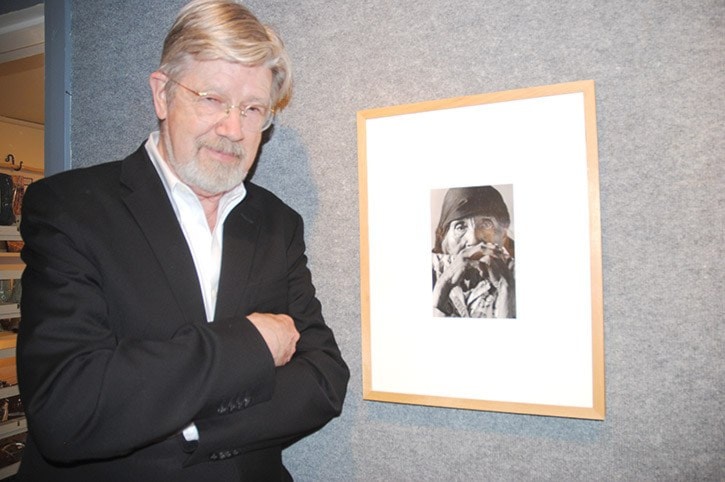The exhibition in the Station House Gallery’s main gallery during the month of June is a beautiful reflection of times gone by.
Most people in this region are aware of the book The Days of Augusta.
This gallery show features a mounted collection of photographs taken during the making of the book back in the fall of 1972 by photographer Robert Keziere.
A Vancouver-based photographer Keziere worked with Cariboo-raised writer Jean E. Speare to create the book based on the life and times of Mary Augusta Tappage Evans from Soda Creek, who was in her late 80s when the book was published in 1973.
Keziere says he spent two weeks visiting with Augusta at her Soda Creek cabin, going for walks with her, taking her for car rides and visiting her family with her.
“She was a bit of a ham, a beautiful ham and liked to go for car rides,” says Keziere.
Augusta was also a very musical person, who would sing and play the mouth organ to entertain the children, he says.
He recorded her singing and some of those songs were playing during the gallery opening earlier this month.
Born in 1888 at Soda Creek Augusta, as she was known, was the daughter of a Shuswap chief and a Métis woman who had fled the Prairies after the defeat of Louis Riel during the Riel Rebellion.
At age four Augusta was placed in a Roman Catholic mission where she was punished for speaking her Shuswap language.
After nine years, she was permitted to live with her grandmother until she was married at age 15 to George Evans whose father was Welsh and whose mother was Shuswap.
As her husband was Welsh she was declared non-status, though she retained her self-sufficient Aboriginal ways, serving other women as a midwife while raising her own children.
Augusta was still a young woman when her husband died and she never remarried, stating that once was enough.
Augusta died on Aug. 16, 1978 at the age of 90.
She was buried in a First Nations graveyard on the Soda Creek Reserve.
Keziere, who was in attendance at the show’s opening earlier this month, is a well known and well travelled photographer.
He is best known for his series of documentary images taken during a 1971 Greenpeace expedition which were published in Robert Hunter’s The Greenpeace to Amchitka: An Environmental Odyssey.
His exhibitions and publications Requiem at the Charles Scott Gallery in 1985 and On Reason at the Contemporary Art Gallery in 1989 solidified his reputation as an artist of great sensitivity.
Keziere is still highly sought after as a freelance photographer and when he is not travelling far and wide he continues to call Vancouver home.
Keziere says the photographs in the exhibition were first shown in the Penticton Art Gallery after curator Paul Crawford recognized the historical importance of the collection.
The collection is now travelling around British Columbia, Keziere says.
